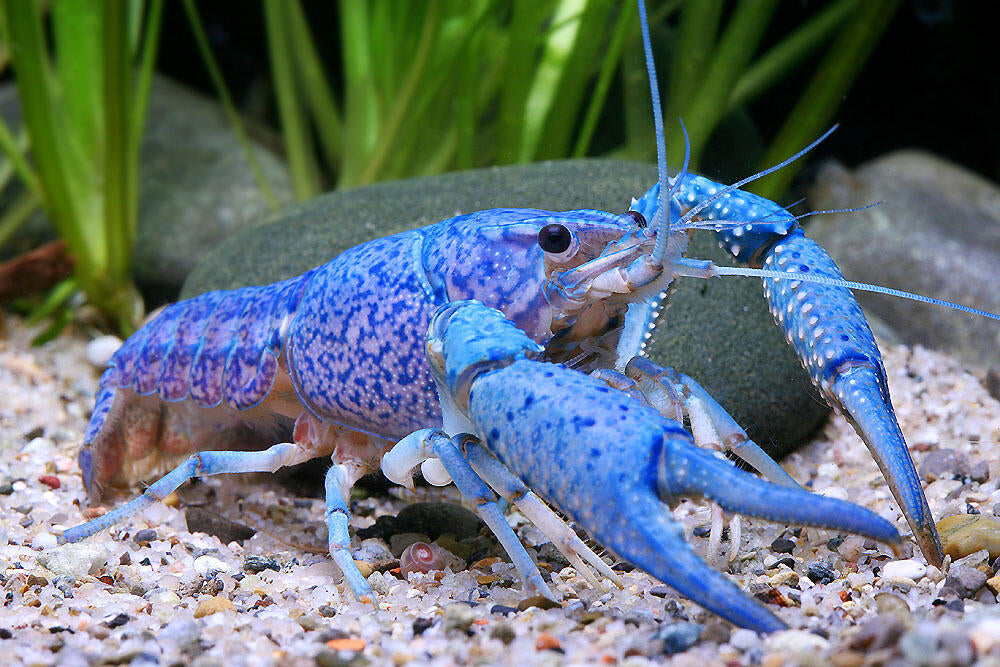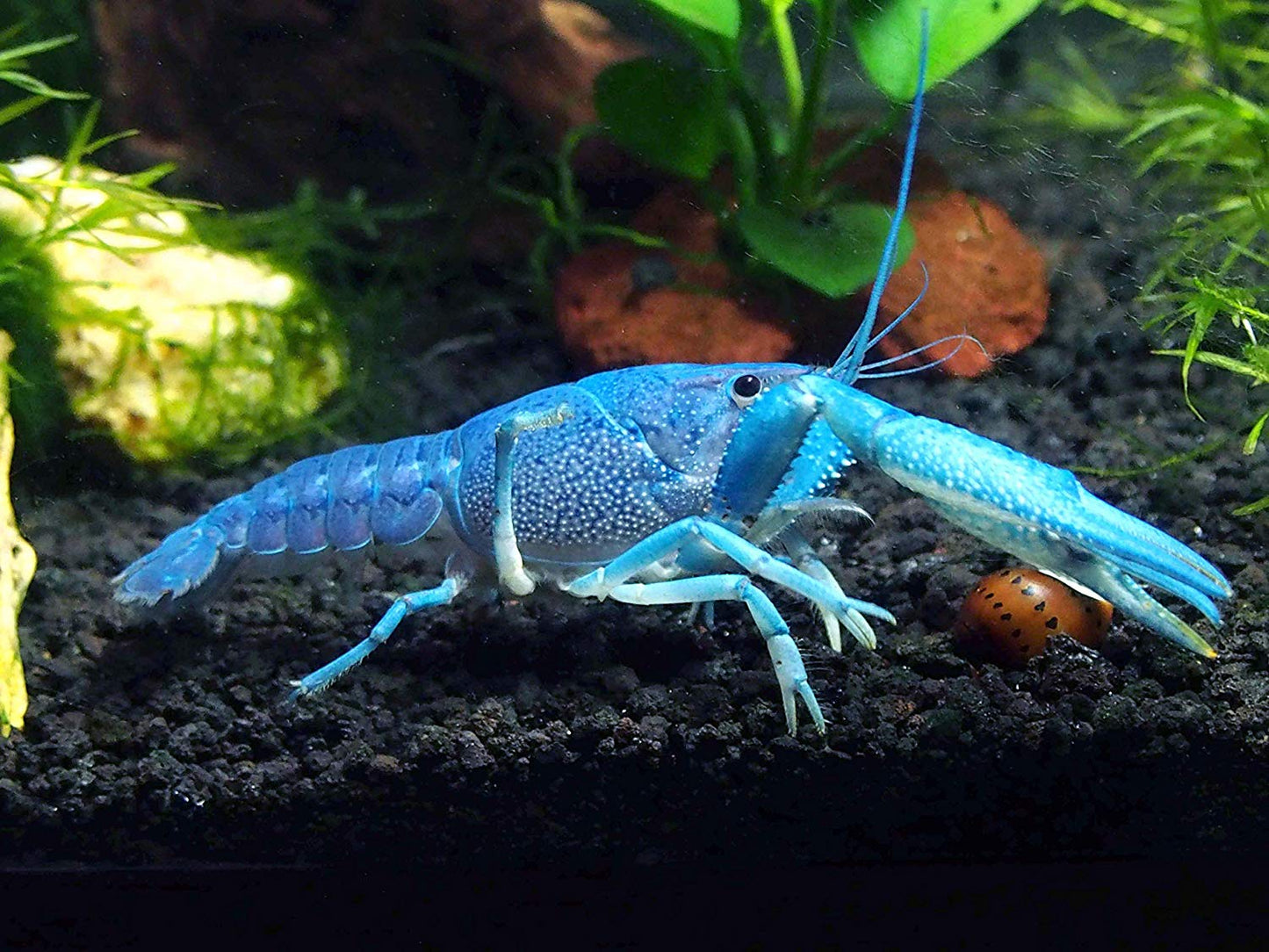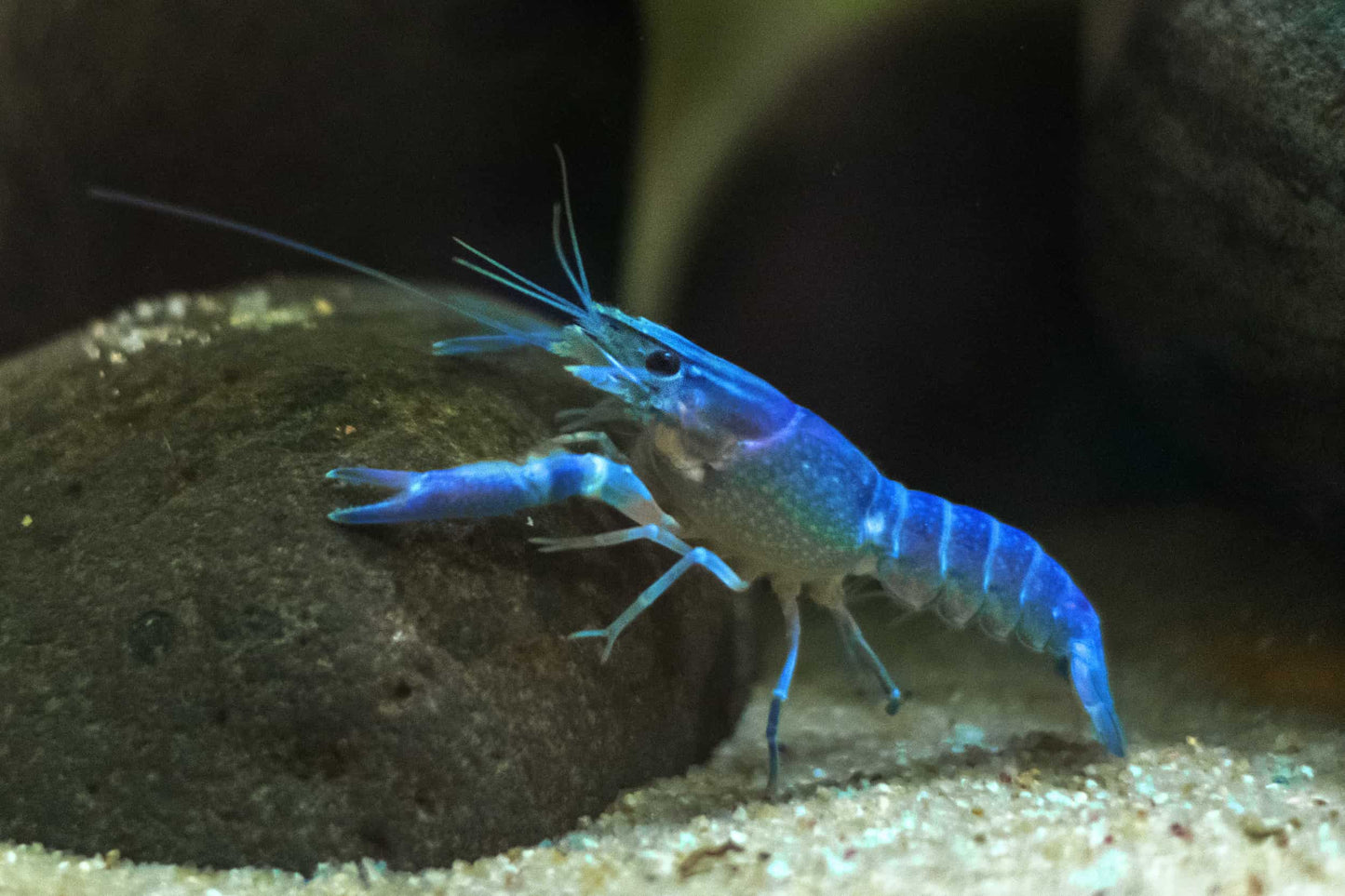Electric Blue Crayfish (Procambarus Alleni) - Live Freshwater
Electric Blue Crayfish (Procambarus Alleni) - Live Freshwater
Detailed Description
Detailed Description
The Electric Blue Crayfish (scientific name Procambarus alleni) is a strikingly colorful freshwater crustacean known for its vibrant blue hue, making it a popular choice among aquarium enthusiasts. Here’s a detailed look at this fascinating species:
Key Features of the Electric Blue Crayfish:
-
Appearance:
- The most distinguishing characteristic of the Electric Blue Crayfish is its bright blue coloration, which can range from a pale to a more intense electric blue, depending on factors like genetics, diet, and water quality.
- The crayfish has a robust, armored body with large claws (chelae), which are often slightly darker than the body and may show hints of orange or purple.
- Their body can grow up to 6 inches (15 cm) in length, with claws that may be even larger in some individuals.
-
Habitat:
- Native to North America, particularly the southeastern United States, Electric Blue Crayfish are often found in freshwater habitats like lakes, rivers, streams, and ponds. They thrive in rocky or muddy environments where they can burrow and hide.
- In an aquarium, they need plenty of hiding spaces, such as caves, rocks, and plants, as crayfish are territorial creatures and can be aggressive toward other tank mates, especially when they molt.
-
Diet:
- Electric Blue Crayfish are omnivores, feeding on a variety of foods, including plants, detritus, small fish, worms, and even dead animals.
- In captivity, they can be fed a balanced diet that includes pellets, vegetables (like zucchini, spinach, or carrots), and protein sources like shrimp, fish, and snails.
-
Behavior:
- Nocturnal and territorial, Electric Blue Crayfish tend to be more active at night, and during the day, they often seek shelter in caves or burrows.
- These crayfish can be quite aggressive toward other crayfish and even fish, particularly when they are shedding their exoskeleton (molting), during which they are vulnerable.
- It is crucial to provide them with enough space in the tank, as they can become territorial and may fight with other species, especially other crayfish.
-
Tank Care:
- Electric Blue Crayfish require a clean, well-filtered tank with a stable water temperature between 68-78°F (20-26°C) and a pH between 6.5 and 7.5.
- The tank should have a substrate that allows them to dig and burrow, such as fine gravel or sand, as they are natural burrowers.
- Water quality is important, and regular water changes are necessary to keep the environment clean and free of toxins like ammonia and nitrites.
-
Molting:
- Like all crayfish, the Electric Blue Crayfish undergoes periodic molting as it grows. During this time, the crayfish sheds its old exoskeleton and grows a new, larger one.
- During the molting process, the crayfish is highly vulnerable and may need to be separated from aggressive tank mates to prevent injury.
-
Breeding:
- Breeding Electric Blue Crayfish in captivity can be tricky, as they require a specific environment to breed successfully. However, it is possible to breed them in tanks with appropriate conditions.
- The female carries fertilized eggs under her tail until they hatch into tiny larvae. After a few weeks, the larvae develop into juvenile crayfish, and they can be very small and difficult to spot initially.
The Electric Blue Crayfish is a beautiful, low-maintenance species that can make a stunning addition to a freshwater aquarium, thanks to its unique and vibrant color. However, it is important to provide them with plenty of hiding places and ensure they are housed with compatible tank mates, as they can be territorial and aggressive. With proper care, they can thrive and add a striking blue accent to any aquarium setup.
Product features
Product features
Materials and care
Materials and care
Merchandising tips
Merchandising tips
Share










